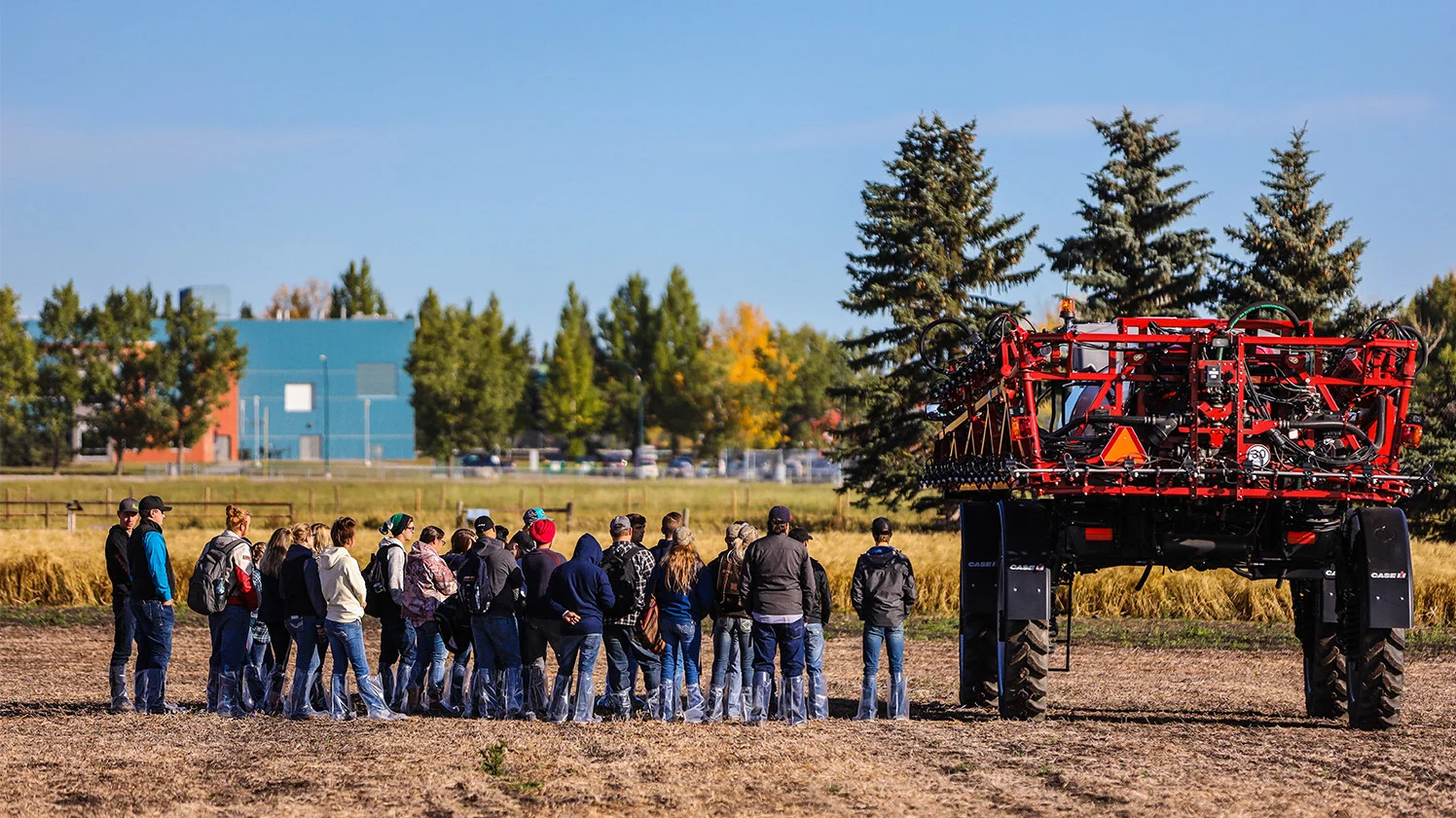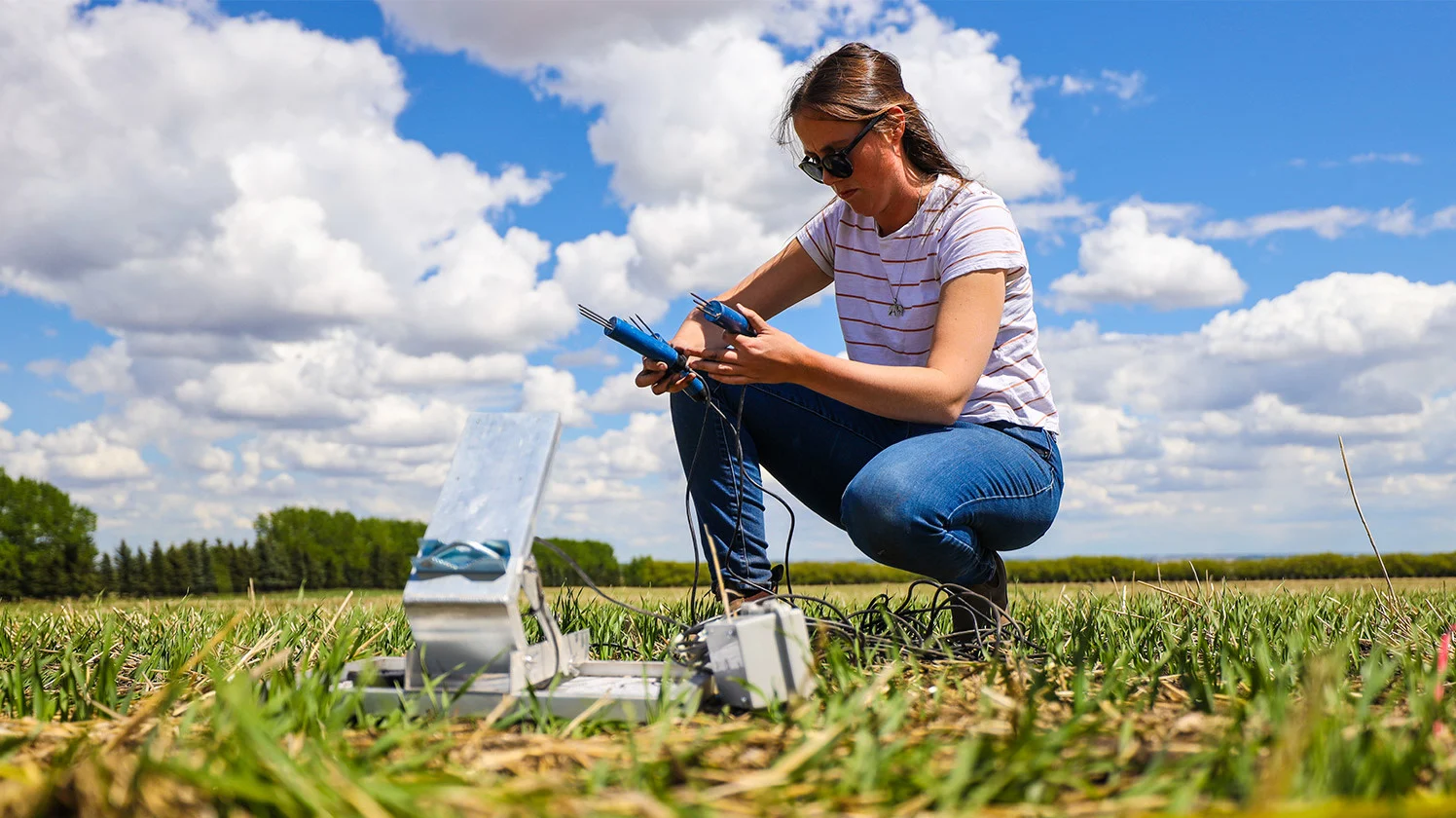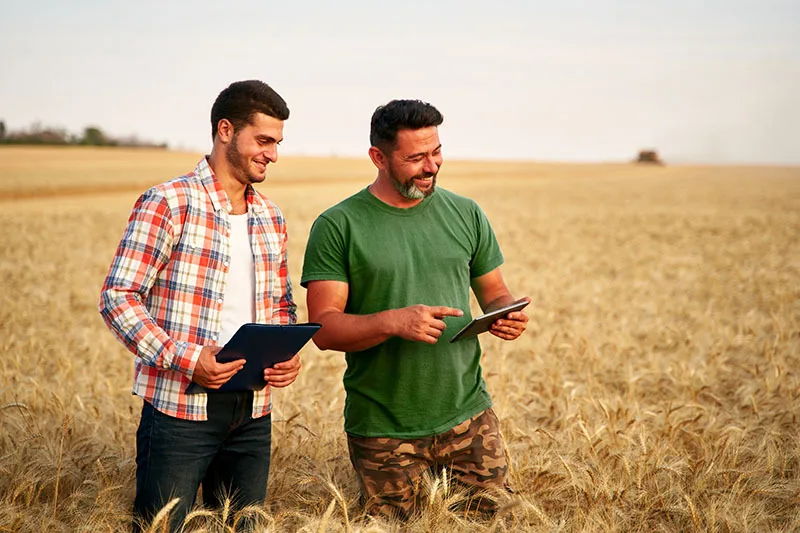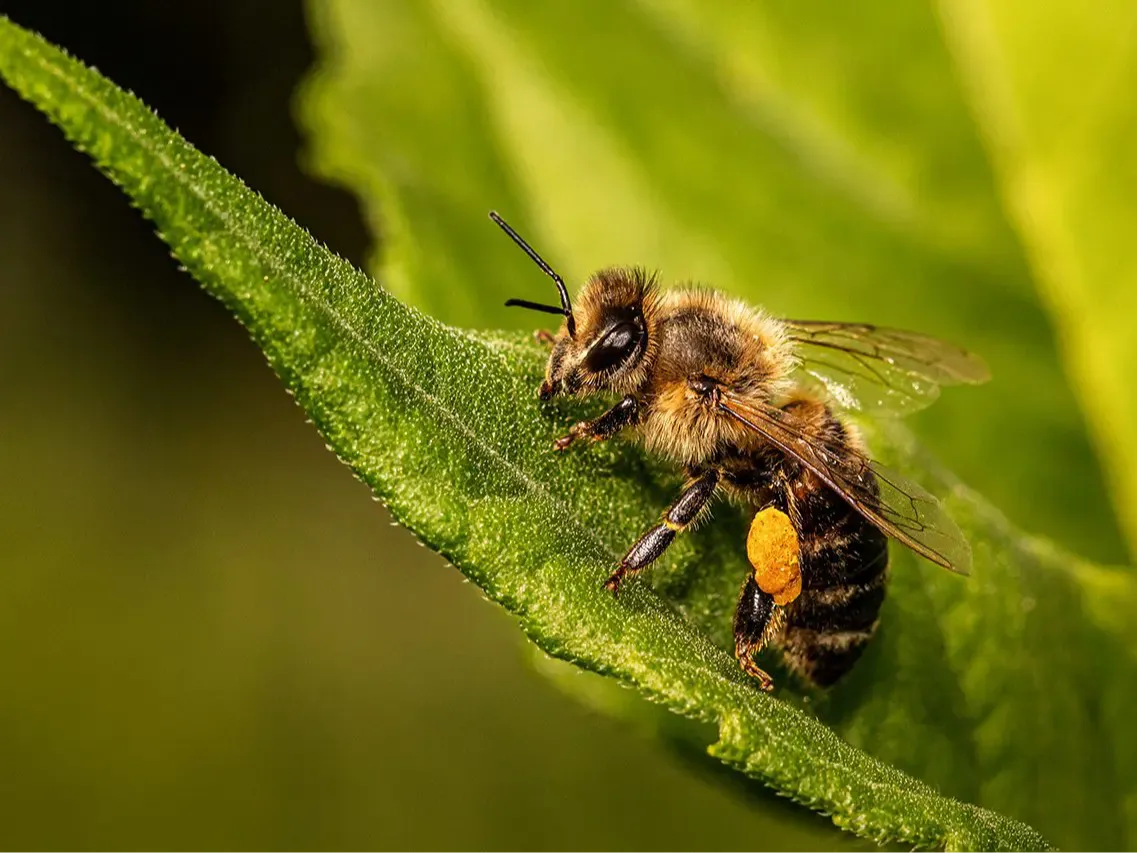(ABOVE) PHOTO COURTESY OF OLDS COLLEGE
Today’s farmers and ranchers have come a long way since the days of the pioneers.
Fueled by game-changing technology, Artificial Intelligence (AI), and robotics, and soon to be powered by the increasing availability of 5G network connectivity, those involved in Canadian food production these days are so much more than agricultural experts.
“They are prudent risk-takers, sophisticated business people, and early tech adopters,” said Stuart Cullum, president of Olds College
in Olds, Alberta, a leading post-secondary school specializing in cutting-edge smart agriculture, horticulture, and land and environmental stewardship. 
The Olds College Smart Farm is training a new generation of tech-savvy food producers on how best to harness innovative tools to vastly boost crop yields, better care for farm animals, and advance economic and environmental sustainability. PHOTO COURTESY OF OLDS COLLEGE
“They are an example to so many other industries of how to push technology forward to advance economic and environmental sustainability.”
The transition comes as the planet deepens its dependence on safe and efficient food production and distribution. Canada is among the world’s largest agricultural exporters and is responsible for feeding billions of people every day. The industry also nourishes the economy: from farmers and ranchers, to food producers, suppliers, retailers, and truckers, an estimated 2.3 million Canadians rely on agriculture for employment, contributing more than $110 billion annually
to our gross domestic product. And that importance is only increasing, with pressures on our global food supply projected to rise by 70 per cent by 2050, driven by a steadily rising global population and shrinking base of new arable land, as well as climate change, collapsing ecosystems, and unsustainable
global farming practices. It’s why Canadian food producers are preparing now to meet the challenges ahead.
Better decisions, better results
The Olds College Smart Farm
may be the best example to date of the innovations shaking up food production and the agriculture value chain. Powered by the TELUS network, the Smart Farm is a large-scale lab operating across 2,800 acres of farmland. There, students, instructors, and industry leaders work together to test new applications and push the boundaries of innovation within the industry. Experiments include using AI to identify animals from the ground or air, and more easily detect injuries and illnesses; measuring the protein content of harvested grain, oil seeds, and pulse crops in near-real time through connected technologies on farming equipment; and tracking the exact state of the soil, moisture in the air, and current weather conditions across multiple fields from one place at the same time through connected field sensors.

Stuart Cullum, president of Olds College in Olds, Alberta, a leading post-secondary school specializing in cutting-edge smart agriculture, horticulture, and land and environmental stewardship. PHOTO COURTESY OF OLDS COLLEGE
Critically, agriculture technology (known as agtech) takes the guesswork out of food production, making the process more cost-effective and sustainable. Farmers and ranchers use all this information to improve herd and nutrient management, boost food safety and efficiency, increase yields and productivity levels, and make better decisions around how much money and effort to put into a crop, based on the value of return. The result is fewer inputs, fewer wasted resources, less fuel consumption, less environmental impact, and lower GHG emissions.
“If a particular part of a field is losing money, there’s no point putting money into it. You can turn it back to grass or put it into production of another crop,” said Cullum. “Agtech enables our agriculture producers to mitigate risk, while boosting productivity and creating value.”
These days, agtech extends far beyond field applications. To meet the ever-growing needs of a hungry planet, the focus is now on developing advanced data systems and AI to streamline operations — from farm to fork. That means bigger, better yields, improved food traceability, and, ultimately, fresher and healthier food for consumers.
Increased efficiency is the driving force behind the launch of TELUS Agriculture
, a new TELUS business unit dedicated to providing innovative solutions to support the agriculture industry with connected technology. Over the past year, TELUS has completed several key acquisitions, with the expertise, experience, and relationships to connect every participant in the agriculture value chain, from seed manufacturers and farmers through to grocery stores and restaurants. “Connecting the value chain and building solutions that make it convenient and valuable to shift to digital will help our customers drive industry-wide profitability while delivering better, healthier products to the consumer,” said Francois Gratton, EVP and Group President TELUS and Chair TELUS Agriculture.
TELUS Agriculture currently supports more than 100 million acres of agricultural land, backed by a team of more than 1,200 experts across Canada, the USA, Mexico, Brazil, the United Kingdom, Slovakia, Armenia, Germany, China, and Australia.

These days, agtech extends far beyond field applications. To meet the ever-growing needs of a hungry planet, the focus is now on developing advanced data systems and AI to streamline operations — from farm to fork. PHOTO COURTESY OF OLDS COLLEGE
The launch comes at a critical time. While the agriculture industry has been quick to embrace innovation, it’s been stymied when it comes to taking full advantage of available technology and sharing data along the food value chain. Right now, said Cullum, it’s not unusual for data to be put on a hard drive and shipped elsewhere along the chain — taking up valuable time when producers need to be making quick decisions.
“Industry-wide connectivity is urgently needed if we want Canada to maintain its position as an industry leader amid the challenges ahead,” he said.
An appetite for 5G
To unlock the full economic potential of Agtech, 5G
is critical to Canada's food producers. Reliable network connectivity in small and rural communities has been challenging in a country whose natural beauty is matched only by its vast and difficult geography. It’s why TELUS continues to build out its networks in rural and remote communities
across Canada. The company also launched its 5G
network this year, with plans to expand over the coming months and years. But as 5G continues to evolve and become more sophisticated, it will be spectrum — the invisible highway of airwaves that transmit data — that will be the true game changer
for the rural connectivity necessary to properly power agtech. Government policies have made the digital divide in Canada worse, leaving some rural Canadians without optimal Internet. You can help change that.
It means signals will travel further and faster, allowing farmers and ranchers to adopt and apply all the cutting-edge digital technologies currently under experiment on the Smart Farm — from drones and remote sensors to autonomous farm equipment.
“It’s going to enable that data transfer at speeds that we have never seen and probably have never imagined,” said Cullum.
The intersection of agriculture and technology is seeding an array of new roles in an age-old industry. AI, robotics, programming — all are helping to boost crops and career options.
“The industry is changing,” said Cullum. “And with those changes, we’re seeing a whole new generation of farmers and ranchers who are eager to adopt new ways of growing with the latest tools available to them."
Originally published in partnership with Maclean’s.







